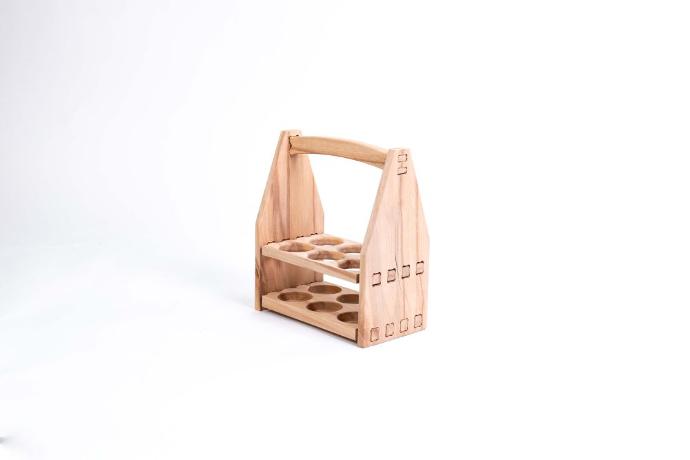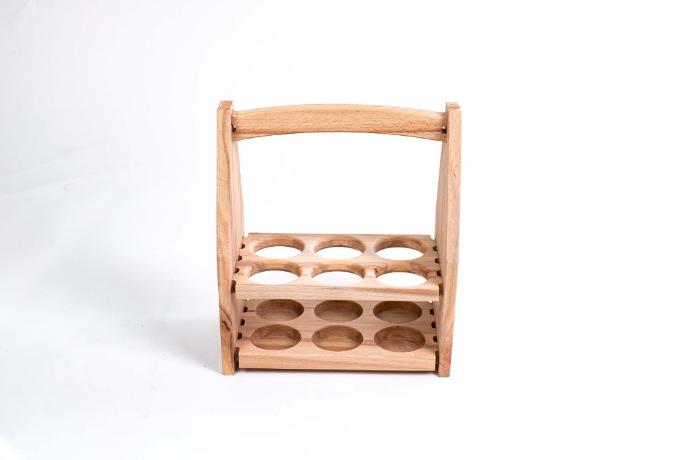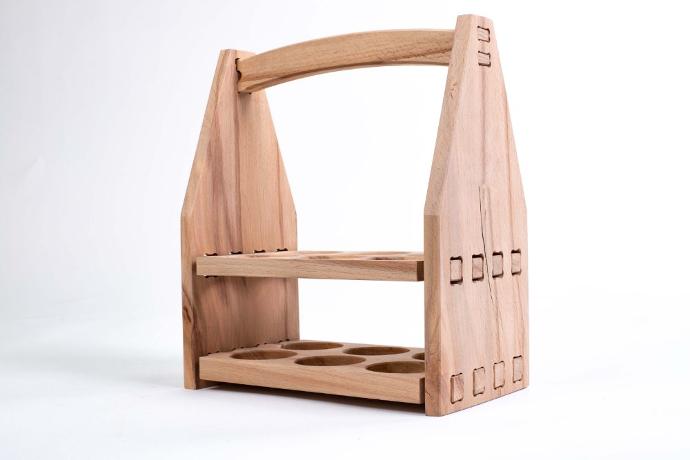Introduction
This project is a relatively complex one. We recommend you to tackle this one after you’ve gained some decent experience with CNC milling.
As the parts are relatively wide and thin for this project, a good clamping is very important! We recommend using at least 1 clamp (or screw) every 10 cm to reduce the vibrations and enhance the quality of your surface finish.
The caddy is made out of 5 pieces of solid wood.
Material
The caddy is made out of 5 pieces but 2 are identical. We thus have 4 Gcodes.
Vertical holder needs a 150 x 310 x 20 mm stock. You need this piece twice for this project.
Middle holder needs a 150 x 270 x 20 mm stock.
Bottom holder needs a 150 x 270 x 20 mm stock.
Handle needs a 270 x 40 x 20 mm stock.
We used beech wood for our stand, but you can use any material you want for this project. Please keep in mind that the project is made for 20 mm thick material and that all the parts fit into each other using mortises and tenons. If you decide to use another thickness of material, you’ll have to modify the fusion 360 project by redrawing all the mortises.
End mill
We used a 6mm 3-flutes flat end mill for milling our pieces. You can buy those directly on our webshop.
If you’d like to edit the Fusion360 project (to use another end mill for example) you can download it by clicking here.
Milling
Vertical Holder
This piece is made out of 3 operations and has to be milled twice to make this project:
With the 6 mm end mill, we mill the mortises for the handle. The spindle should run between 20 000 and 25 000 rpm as the feedrate is 2400 mm/min with 2 mm passes.
Next we mill the other mortises (used for joining the middle and bottom holder). The spindle should run between 20 000 and 25 000 rpm as the feedrate is 2400 mm/min with 2 mm passes.
To free the piece we make a contour operation leaving a 0.3 mm axial stock-to-leave you will have to cut using a chisel or a sharp knife. The spindle should run between 20 000 and 25 000 rpm as the feedrate is 2400 mm/min with 3 mm passes.
Middle Holder
This piece is made out of 2 operations:
To make the inside holes we use a contour operation leaving a 0.3 mm axial stock-to-leave you will have to cut using a chisel or a sharp knife. The spindle should run between 20 000 and 25 000 rpm as the feedrate is 2400 mm/min with 2 mm passes.
To free the piece we make a contour operation leaving a 0.3 mm axial stock-to-leave you will have to cut using a chisel or a sharp knife. The spindle should run between 20 000 and 25 000 rpm as the feedrate is 2400 mm/min with 2 mm passes.
Bottom holder
This piece is made out of 2 operations:
We start by milling the pocket for the bottles.the spindle should run between 20 000 and 25 000 rpm as the feedrate is 2400 mm/min with 2 mm passes.
To free the piece we make a contour operation leaving a 0.3 mm axial stock-to-leave you will have to cut using a chisel or a sharp knife. The spindle should run between 20 000 and 25 000 rpm as the feedrate is 2400 mm/min with 2 mm passes.
Handle
The handle is made out of 1 simple contour operation leaving a 0.3 mm axial stock-to-leave you will have to cut with a chisel or a sharp knife. The spindle should run between 20 000 and 25 000 rpm as the feedrate is 2400 mm/min with 2 mm passes.


